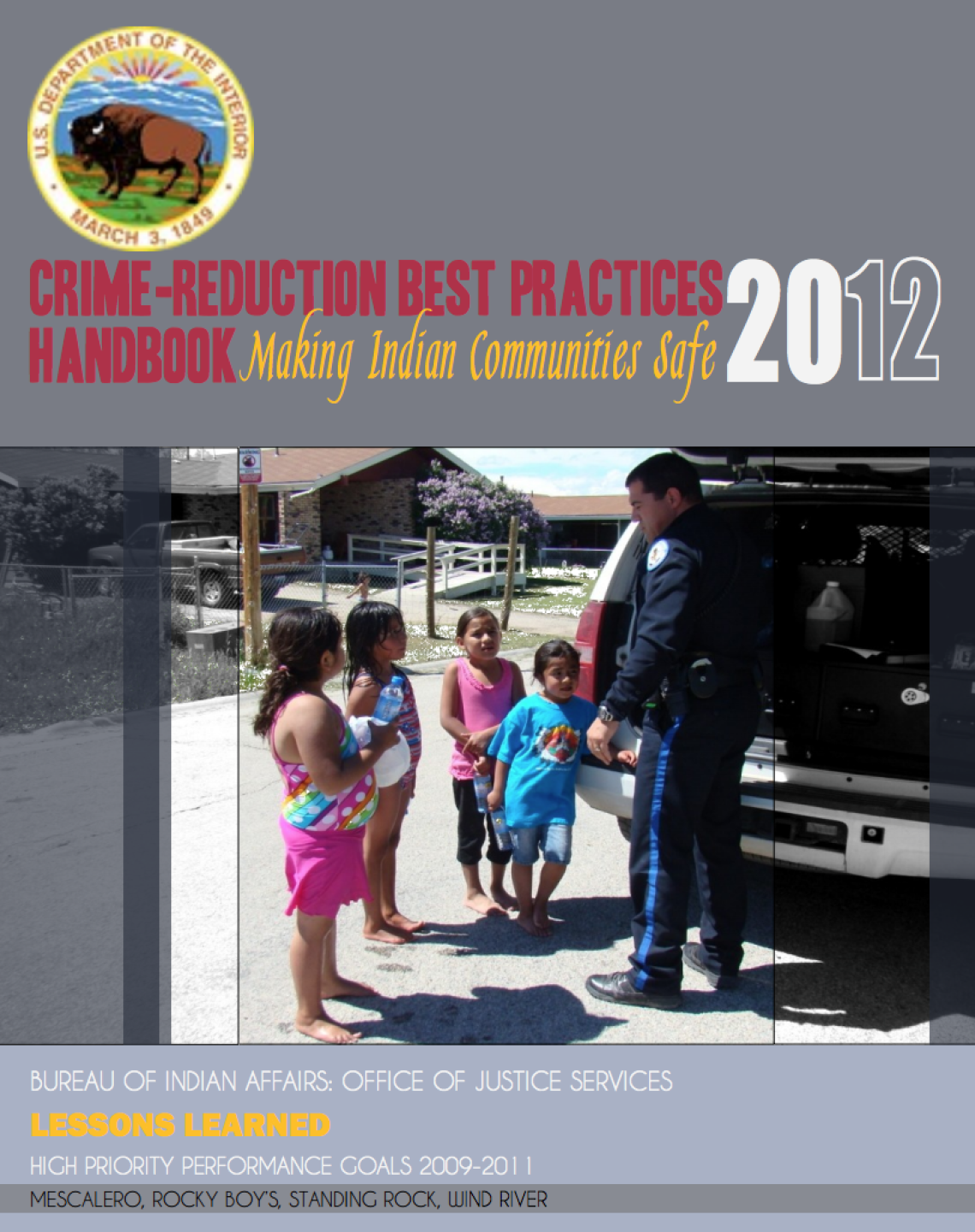In 2009, the Secretary of the Interior and the Assistant Secretary-Indian Affairs established a High Priority Performance Goal (HPPG) to reduce violent crime by a combined 5% within 24 months on targeted tribal reservations. The selected reservations were Rocky Boy’s (Montana), Mescalero (New Mexico), Wind River (Wyoming), and Standing Rock (North and South Dakota). By the end of 2011, the strategies implemented and practiced by the law enforcement agencies operating on these reservations resulted in a combined reduction of violent crimes by 35%. This handbook is a compilation of the strategies that were instrumental in achieving and surpassing the goal...
Additional Information
Office of Justice Services. "Crime-Reduction Best Practices Handbook: Making Indian Communities Safe." Office of Justice Services, Bureau of Indian Affairs. Washington, DC. 2012. Paper. (http://www.bia.gov/cs/groups/xojs/documents/text/idc-018678.pdf, accessed September 11, 2013)

